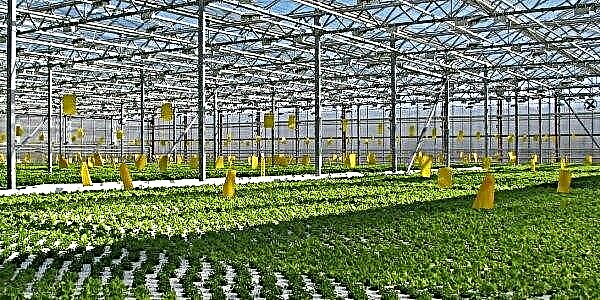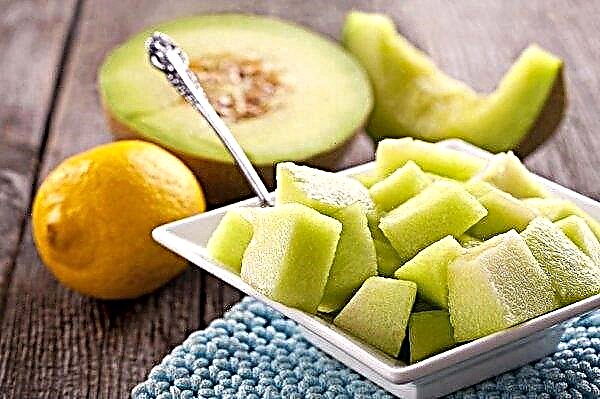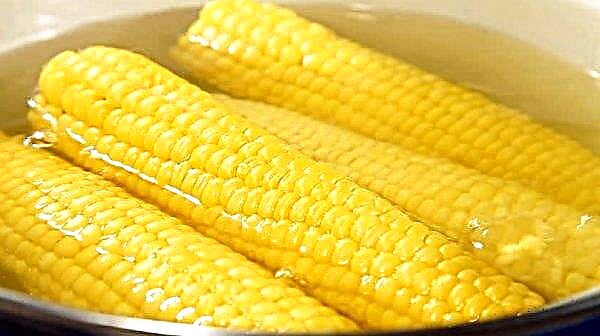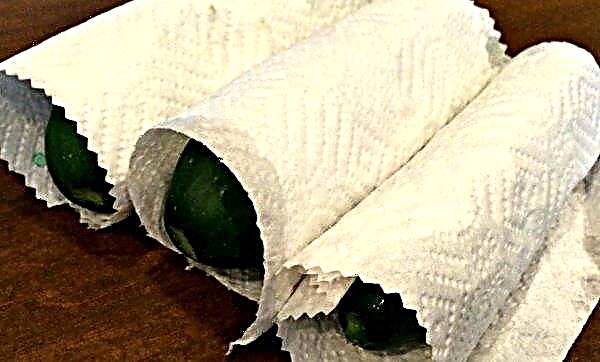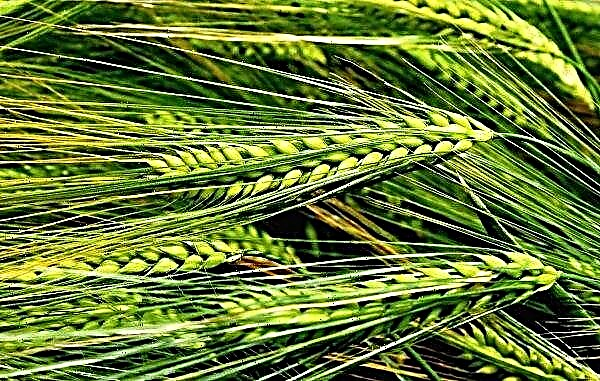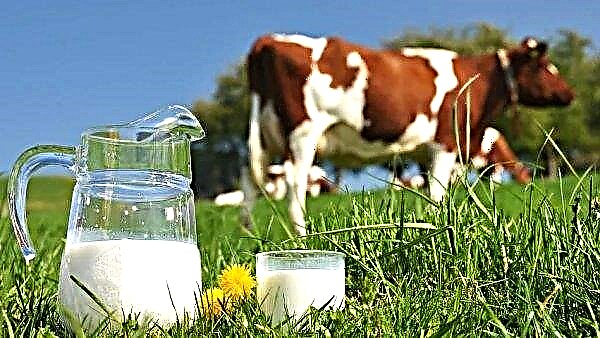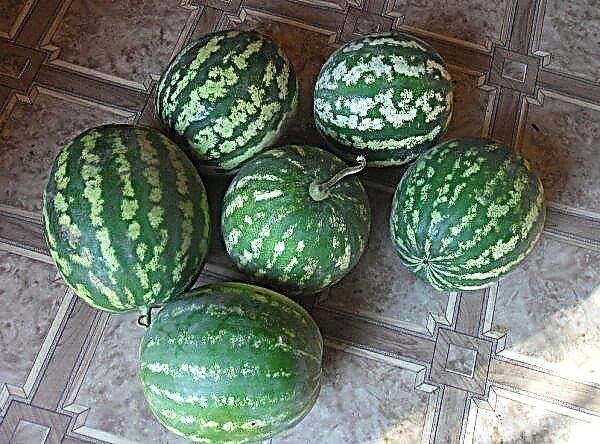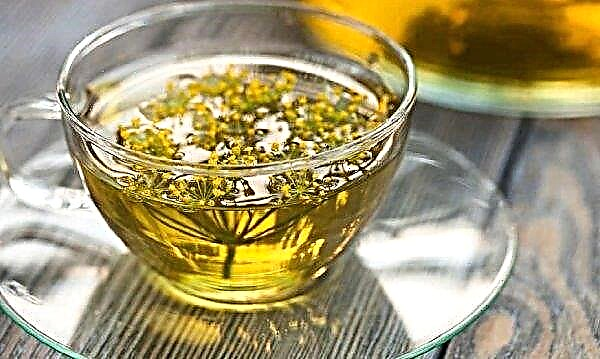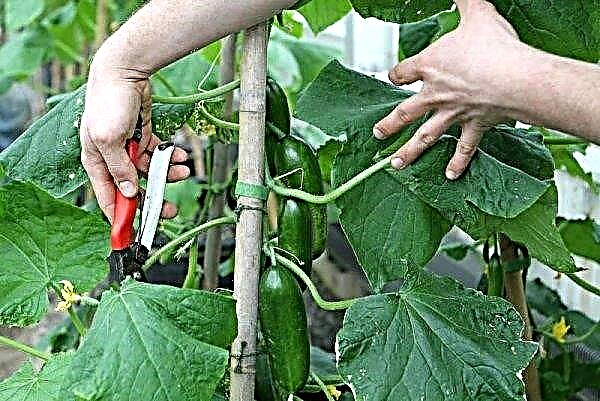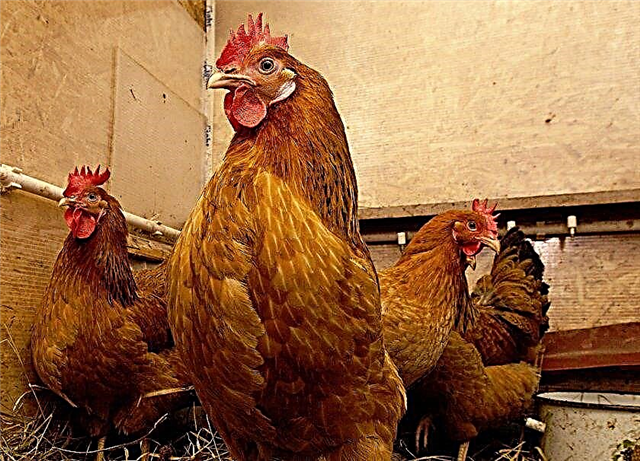Each gardener is looking for the perfect cucumber variety by analyzing indicators of yield, taste, size of green fruits, the possibility of pickling, branching of bushes, the need for pinching, whimsical care, difficulty growing and other criteria. When choosing, it is worth paying attention to the well-established variety of Murashka F1 cucumbers. Read more about the variety - below.
Characterization and description of the variety
Goosebump F1 is a variety of cucumbers that became available to the public in 2003. The variety is the achievement of the breeders of the Russian company Gavrish. From the very first days, the variety became a highlight and a sales leader, and was soon listed in the Russian Register of selection achievements. In the list of characteristics it is worth noting the indeterminacy (unlimited) of the growth of stems. The bushes are well branched, densely covered with foliage. The shape of the leaves is smooth, irregularly serrate at the edges. A lot of nodes are formed on the stems, the distance between which is quite small.
Did you know? Cucumber juice is an excellent way to eliminate cough. He also fights well with atherosclerosis and memory loss.
From 3 to 6 bundles of ovaries are formed on each node, from which fruits are then formed. The neck is short. The variety belongs to early ripening: you can enjoy the fruits already 35–40 days after planting. Pollination of the hybrid is parthenocarpic, that is, it is pollinated by bees and does not need a pollinator. The hybrid form blooms with bright yellow flowers. Ovaries form on the female stems. Goosebump F1 differs from other species in the following features:
Goosebump F1 differs from other species in the following features:
- smooth, cylindrical shape of the fruit;
- the average length of cucumbers is 12 cm, the longest reach 15 cm, 3-4 cm in diameter;
- the surface of the fruit is coarse, tuberous, with small spikes of black color;
- the color of the peel, according to which the fruits are recognized: light green bottom and edges, and a rich green color of the base of vegetables. Juicy tasty and crisp flesh is hidden under the peel;
- the weight of the fetus, which ranges from 85-100 g.
Did you know? One of the skyscrapers in London is called "London Cucumber" because of the similarity of the building in shape to this vegetable.
Pros and Cons of the Hybrid
- The hybrid form has gardeners with an impressive list of advantages:
- early ripening;
- lack of a hollow stem;
- esthetic and attractive form of fruits;
- lack of bitterness in taste;
- universality of use: fresh vegetables perfectly complement many salad varieties, have a unique flavor when salted and pickled;
- disease resistance;
- the possibility of planting, both in open areas (garden, vegetable garden), and in greenhouse conditions (even on the windowsill);
- high productivity: one bush can bear up to 7.5 kg of fruit (10-12 kg / 1 m²);
- the fruits do not overripe quickly if they are not picked on time.
- The disadvantages of the variety include:
- non-ripening of seed material: cucumber seeds do not develop to the end;
- unlimited growth of bushes;
- insignificant moodiness of cultivation - they require compliance with agrotechnical rules of cultivation.
Grade planting dates
F1 Murashka seeds are distinguished by good germination if they are sown on beds. Sowing seed material is possible only when the thermometer rises to the level of + 18 ... + 23 ° C, the soil layer warms up well, and night frosts recede. Such conditions correspond to May. If the winter was lingering and cold, it is better to wait until landing until June. It is desirable to cover the crops with a film.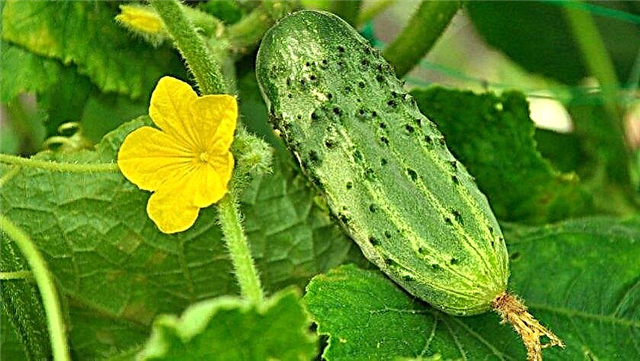 For planting ready seedlings, the requirements are identical - soil temperature at least + 15 ° C, no frost. Greenhouse planting can be done much earlier: sowing seeds is permissible even at the end of March, and gardeners prefer to plant seedlings in April.
For planting ready seedlings, the requirements are identical - soil temperature at least + 15 ° C, no frost. Greenhouse planting can be done much earlier: sowing seeds is permissible even at the end of March, and gardeners prefer to plant seedlings in April.
Planting and growing varieties
The variety of cucumbers Murashka F1 is hybrid, and there are two ways of planting it: seedlings and seedlings. The seedling method is more time-consuming, and it is usually used for an early harvest. The variety is suitable for planting both outdoors and in a greenhouse. The technology of planting and growing is almost no different from other varieties of cucumbers.
Seedling method
To get a good harvest when planting seeds in the soil, it is necessary that the soil is fertile, breathable, seasoned with nutrients and pre-treated.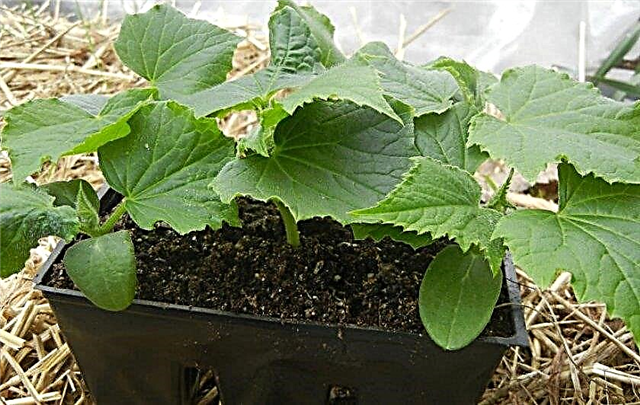 Land for seedlings can be purchased in specialized stores or prepared yourself according to the following recipe:
Land for seedlings can be purchased in specialized stores or prepared yourself according to the following recipe:
- soil (preferably loamy type) - half a bucket;
- humus - half a bucket;
- ash - 100 g;
- superphosphate - 10 g;
- potassium sulfate 3-5 g.
Important! Sandy and loamy soil types are best suited for sowing.
Seeds are sown to a depth of 1-2 cm and as the seedlings grow, the soil needs to be sprinkled to prevent the stem from falling. Containers with seedlings must be placed in a box and put in a sunny place. Cover the box with foil. In a room with seedlings, you need to maintain the temperature at + 25 ° C. The first shoots should be expected up to 2.5 weeks. After germination, in order to avoid rapid growth of the stem, the room temperature must be lowered to + 15 ° C.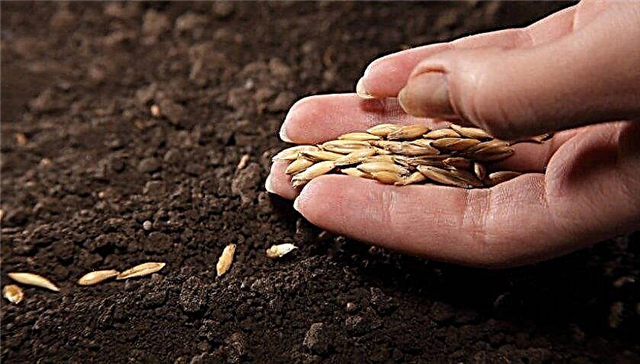 Stalks with two leaves are allowed for planting. Planting is carried out at the rate of 3 bushes per 1 m² in a line, and for the subsequent facilitation of soil cultivation - in a checkerboard pattern. Seedlings can be planted in the period from late April to early June, provided that the soil is warmed up to the required temperature to a depth of 15 cm. But it should be borne in mind that a late planting can lead to a drop in yield and a decrease in soil moisture.
Stalks with two leaves are allowed for planting. Planting is carried out at the rate of 3 bushes per 1 m² in a line, and for the subsequent facilitation of soil cultivation - in a checkerboard pattern. Seedlings can be planted in the period from late April to early June, provided that the soil is warmed up to the required temperature to a depth of 15 cm. But it should be borne in mind that a late planting can lead to a drop in yield and a decrease in soil moisture.
Important! Obtaining an early harvest is facilitated by hardening of seeds in the refrigerator at a temperature of + 2 ° C for 18 hours.
Seedling method
For planting, it is better to choose seeds 3-4 years old. Before planting, they should be warmed up to + 50 ° C for three days and soaked in a solution of potassium permanganate. In this way, you will disinfect the seeds. And after washing with water, you can begin to land. In autumn, it is advisable to distribute 1 bucket of humus per 1 m² area on the plot.
You can lighten the ground by distributing 1 bucket of sand per 1 m². Before planting, the soil must be weighed and loosened. It is better to use areas where peas, cabbage or onions grew. It is advisable to choose the site from the sunny side for the best growth and, accordingly, the crop. The landing method is in a line or staggered.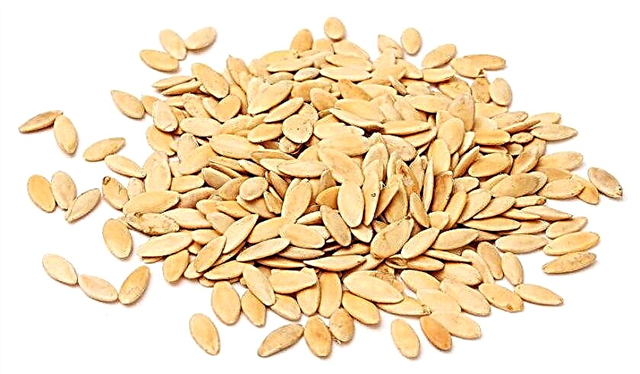 Step-by-step procedure for sowing seeds:
Step-by-step procedure for sowing seeds:
- Site selection and preparation of beds (in the fall).
- Preparation of seeds, which consists in sorting (choosing high-quality seed material and eliminating empty grains), heating and hardening of seeds (in order to increase not only germination, but also the immunity of future plants, as well as accelerate the process of obtaining the crop).
- Preparing grooves for seeds. Experienced gardeners recommend sowing Murashka F1 cucumbers in rows, the distance between which should be 0.7 m. The depth of the grooves is 3-4 cm, if sowing is carried out in light soil, then you can deepen them to 5-6 cm.
- On 1 m² of a plot no more than three plants should grow.
Important! Cucumbers do not like the neighborhood of potatoes and greens (except dill).
Cucumber care after planting
Cucumbers, like any other crop, need care and processing. Processing includes top dressing, watering and cultivating the soil to get a better crop. Since cucumbers are a climbing plant, they need a garter to get sunlight. About it further.
Top dressing and watering
A prerequisite for a good harvest is the periodic dressing of the plant with organic fertilizers. The first dressing should be done on the 7-10th day after planting. Top dressing is done by the foliar or root method. In the early periods, during possible frosts or in the rainy season, pouring compost under the root is not recommended; it is better to use the foliar method of fertilizer. Fertilizers can be purchased at the store or used for the first composting a liquid mixture of cow manure and water in a ratio of 1:10. For the following dressings, nitroammophoska can be added to the mixture. Top dressing is done in the evening or on a cloudy day after watering. In addition, for compost you need to use a mixture infused for several days, you can not use freshly prepared. Particular attention should be paid to the protection of bare roots from fertilizer getting on them. The recommended amount of top dressing is 4 times a season. An important factor for increasing the yield is watering.
For the following dressings, nitroammophoska can be added to the mixture. Top dressing is done in the evening or on a cloudy day after watering. In addition, for compost you need to use a mixture infused for several days, you can not use freshly prepared. Particular attention should be paid to the protection of bare roots from fertilizer getting on them. The recommended amount of top dressing is 4 times a season. An important factor for increasing the yield is watering.
Important! If you decide to use pork manure for compost, do not use it fresh. So it is dangerous for humans and crops. Pig manure is recommended to be used only after a year of sludge.
Experienced vegetable growers recommend using a drip irrigation method or sprinkling method. But for most fans, such methods are costly. Therefore, more often gently watered with a small stream of water. Water must be used warm, warmed up in the sun, in the amount of 1-2 buckets per 1 m². Watering can be done every day, the main thing is not to overdo it so that the root system does not rot. Also, do not direct the stream to the bush during active flowering. The minimum frequency of watering is once every three days.
Video: how to feed cucumbers
Shaping and Garter
Cucumber garter is necessary, as this climbing plant will certainly grow up. First you need to hammer into the ground support, strong enough to support the weight of the future plant. The operation should be carried out carefully, in order to avoid damage to the root of the plant. As soon as the plant crawls up, it is necessary to tie it up.
Did you know? Iranians consider cucumbers fruits, so they are served on the festive table along with sweets.
When 6-7 leaves appear on the main stem, you need to trim it to form a bush. Side stems should have a length of not more than 50 cm. All stems must be untangled as necessary and tied up to improve pollination processes and receive sunlight. If you start the process of garter and the formation of a bush and allow multiple interweaving of stems, the process of formation of ovaries will deteriorate, which adversely affects the crop.
Weeding and loosening the soil
Loosening the soil once a week is a mandatory operation that promotes the penetration of oxygen into the soil to the roots. The first loosening is carried out only after the appearance of the third leaf in the plant. Loosening is recommended after heavy watering. In addition, it is necessary to systematically weed weeds to grow the bush and increase the useful elements obtained from the soil.
Diseases and pests of cucumbers
Murashka F1 cucumbers can get sick with peronosporosis (downy mildew) and root rot. You can find out that cucumbers are infected with peronosporosis by the numerous light yellow spots that densely cover the foliage of the crop. Harmless, at first glance, spots can lead to the death of the entire bush: first the plants turn brown, due to the expansion of spots, then they frown, hide in clusters of fungal spores, in the form of gray-black dots, and soon dry out. The source of the disease is fungal spores, the appearance of which can provoke the use of cold water during irrigation.
A kind of cure for this phenomenon is whey (dissolved in water in a ratio of 1:10), which must be sprayed with the culture. You can also resort to sprinkling cucumbers with a mixture of iodine (10 drops / 10 l of water) or kefir, diluted in water (proportion 1:10). For prevention purposes, it is recommended to spray plantings with kefir solution every 10-12 days. You can also conduct the treatment "Fitosporin". Due to cold watering, bushes can also suffer from root rot. Also, the disease provokes non-compliance with the rules for planting cucumbers, and more specifically - too small a distance between the bushes, and sharp jumps in temperature conditions throughout the day. The danger of the disease is that the infection can lurk in the ground and harm crops, which will then be planted in the same area. The plant will “report” the disease by dull growth, lethargy of leaves and shoots. The stems begin to blacken at the base. Blackened areas are covered with mucus and mold. The following measures will help to eliminate the disease: the stems are cleaned of soil, and the roots are treated with copper sulfate mixed with wood ash.
Also, the disease provokes non-compliance with the rules for planting cucumbers, and more specifically - too small a distance between the bushes, and sharp jumps in temperature conditions throughout the day. The danger of the disease is that the infection can lurk in the ground and harm crops, which will then be planted in the same area. The plant will “report” the disease by dull growth, lethargy of leaves and shoots. The stems begin to blacken at the base. Blackened areas are covered with mucus and mold. The following measures will help to eliminate the disease: the stems are cleaned of soil, and the roots are treated with copper sulfate mixed with wood ash.
To prepare the solution you need to take 2 tsp. vitriol, 6 tbsp. ash and dilute these funds in 1 liter of water. It was also recommended to resort to spraying with "Alirin-B" and "Previkur" (every 4-6 days, until complete recovery). The dead bushes must be dug up and burned away from the summer cottage. And treat the earth with a solution of vitriol. During the treatment period, diseased plants are recommended to be watered with a pale pink manganese solution. The mildew variety F1 is resistant to powdery mildew and cladosporiosis.
Harvesting and storage features
The fruiting period of Goosebumps begins a month and a half after planting. Harvesting is carried out throughout the fruiting time (mid-June - end of August). But Murashka F1 cucumbers are prone to overgrowing, so it is recommended to cut ripe fruits at least once every 3-4 days. Moreover, this periodicity contributes to the emergence of new ovaries and an increase in yield. One bush gives 7.5-12 kg of fruit. To keep the fruits fresh, harvesting is done in the morning. Cucumbers will be fresh for about 3 days. To increase the period of suitability, you need to perform simple manipulations and comply with the conditions for selecting fruits in appearance and condition:
To increase the period of suitability, you need to perform simple manipulations and comply with the conditions for selecting fruits in appearance and condition:
- Cucumbers should be fresh. It is advisable to store fruits on the day of harvest.
- Fruits should be cleaned of dirt, leaves and always dry.
- All fruits must be undamaged. The injured vegetable will rot over time and infect the rot stored nearby.
- Overgrown cucumbers are not suitable for storage.
The easiest way to store is to send cucumbers to a cardboard box. At temperatures up to + 20 ° С they will hold freshness for 2-3 days. If this is not enough, fill the cucumbers with water, placing them vertically in the container. Lower them with the stalks down and pour cool water 1-2 cm above the fruits. Water needs to be changed every 1-2 days. Cucumbers will remain fresh for up to three weeks. Good storage in the refrigerator.
Important! Do not store cucumbers in the refrigerator with fresh fruits and vegetables. They emit ethylene, which contributes to the overriding of cucumbers.
To do this, wrap the cucumbers with gauze or paper napkins, pack them in a loose-knit plastic bag and place them in the vegetable compartment. So the fruits will last up to two weeks. You can not freeze cucumbers in the freezer or store close to it - at low temperatures, the fruits become covered with mucus and become unusable. With the right choice of a productive variety of cucumbers, you can enjoy fresh crispy fruits for almost a year. The main thing is to provide the culture with appropriate cultivation conditions, observing the rules of agricultural technology recommended by gardeners and breeders.
With the right choice of a productive variety of cucumbers, you can enjoy fresh crispy fruits for almost a year. The main thing is to provide the culture with appropriate cultivation conditions, observing the rules of agricultural technology recommended by gardeners and breeders.

